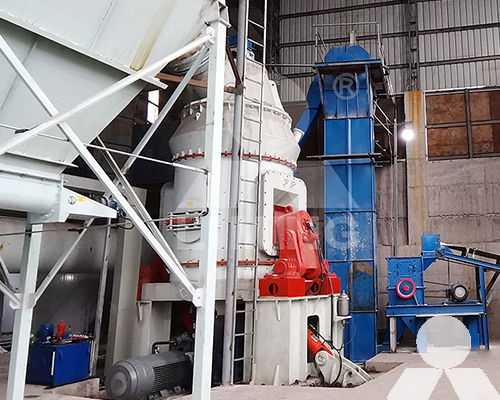Vertical Roller Mill in Cement Production Process
The cement industry plays a pivotal role in global construction, and its production process is continuously evolving to meet the increasing demand for this essential building material. One of the key innovations in cement manufacturing is the use of vertical roller mills. This article delves into the cement production process, with a focus on the application and benefits of vertical roller mill.

Cement Production Overview:
Cement production is a complex and energy-intensive process that involves the conversion of raw materials, primarily limestone, clay, and iron ore, into clinker. The clinker is then finely ground to produce cement. Traditional cement production methods often involve ball mills, but the use of vertical roller mills has gained popularity due to their numerous advantages.
Vertical Roller Mill:
A vertical roller mill is a type of grinding machine used to pulverize materials into extremely fine powder particles. Vertical Roller Mills consist of a rotating table to which grinding rollers are attached. The raw materials are fed between the table and the rollers, and the grinding process occurs by compressing and crushing the materials between them.
Advantages of Vertical Roller Mills in Cement Production:
- Energy Efficiency: Vertical Roller Mills are known for their energy efficiency. They require less energy to grind materials compared to traditional ball mills, reducing the carbon footprint of cement production.
- High Grinding Efficiency: Vertical roller mills provide a higher grinding efficiency, resulting in finer and more consistent cement particles. This leads to improved cement quality and strength.
- Low Maintenance: Vertical Roller Mills have fewer moving parts compared to traditional mills, resulting in reduced maintenance requirements and downtime.
- Flexibility: Vertical roller mills can handle various raw materials and adapt to different cement types, making them versatile and suitable for modern cement production.
- Environmental Benefits: The reduced energy consumption of Vertical Roller Mills translates to lower greenhouse gas emissions, contributing to a more sustainable cement manufacturing process.
Cement Production Process with Vertical Roller Mills:
- Raw Material Preparation: Limestone, clay, and iron ore are extracted and processed to obtain a uniform feed for the Vertical Roller Mill.
- Grinding: The raw materials are fed into the Vertical Roller Mill, where they are ground to a fine powder by the grinding rollers and table.
- Clinker Production: The ground materials are mixed and heated to form clinker in a rotary kiln.
- Clinker Grinding: The clinker is finely ground in the Vertical Roller Mill to produce cement.
- Packaging and Distribution: The finished cement is packaged and distributed for use in construction projects.
Vertical roller mills have revolutionized the cement production process by providing energy-efficient, high-quality, and environmentally friendly grinding solutions. Their adoption by the cement industry demonstrates a commitment to sustainability and improved product quality. As the demand for cement continues to grow, Vertical Roller Mills are likely to play an increasingly important role in meeting these challenges and ensuring the availability of this essential building material.









